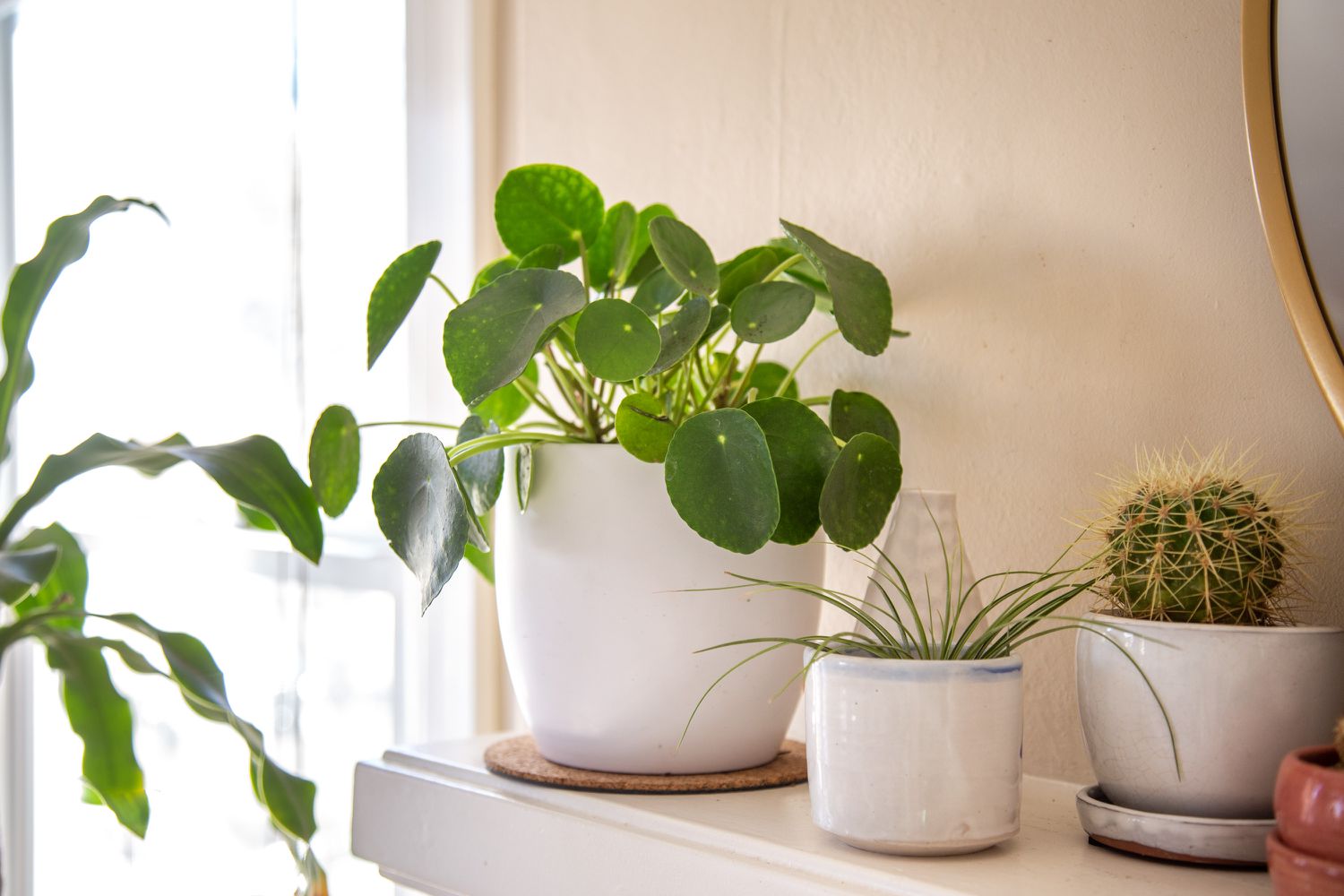
Pilea, also known as the Chinese Money Plant or UFO Plant, is a fascinating and unique species of plant that has captured the attention of plant lovers and collectors around the world. With its distinctive round leaves and delicate appearance, Pilea has grown in popularity due to its low-maintenance nature and ability to thrive in various environments.
But there’s more to Pilea than meets the eye. In this article, we will uncover 19 extraordinary facts about Pilea that will deepen your understanding and appreciation for this remarkable plant. From its origins and symbolism to its intriguing propagation methods and health benefits, you’ll discover the hidden wonders of Pilea that make it a must-have addition to any green space.
Key Takeaways:
- Pilea plants, also known as the “Chinese Money Plant,” are easy to care for, pet-friendly, and can bring good fortune. They are fast-growing, air-purifying, and can enhance your mood, making them a perfect addition to any home.
- With over 600 species, Pilea plants are versatile, adaptable, and popular among plant collectors. They can be propagated easily, grown in terrariums, and are Instagram sensations, adding beauty and charm to any living space.
Pilea is commonly known as the “Chinese Money Plant.”
With its round, coin-like leaves, the Pilea plant has earned its nickname as the Chinese Money Plant. Its unique appearance makes it a popular choice for indoor gardens and adds a touch of charm to any space.
There are over 600 species of Pilea.
From the Pilea peperomioides, commonly known as the “Pancake Plant,” to the Pilea glauca or “Aquamarine,” there are a wide variety of Pilea species to discover. Each species has its own unique characteristics and growth patterns.
Pilea plants are native to Central and South America.
These delightful plants are indigenous to regions such as Mexico, Brazil, and Ecuador. They thrive in tropical environments and can be found growing naturally in the wild.
Pilea plants are considered easy to care for.
Perfect for beginner gardeners, Pilea plants are relatively low maintenance. They prefer bright, indirect light and well-draining soil. Regular watering and occasional misting will keep them happy and healthy.
Pilea plants are known for their fast growth.
When provided with optimal conditions, Pilea plants can grow quickly. It’s not uncommon for new leaves to sprout within a week or two after planting. This rapid growth makes them a popular choice among plant enthusiasts.
Pilea plants are great air purifiers.
Like many other indoor plants, Pilea is excellent at purifying the air. They absorb harmful toxins and release oxygen, creating a healthier indoor environment for you and your loved ones.
Pilea plants can produce small, white flowers.
While Pilea plants are primarily known for their stunning foliage, they can also produce small, white flowers. These delicate blooms add an extra touch of beauty to the plant.
Pilea plants are pet-friendly.
If you have furry friends at home, there’s no need to worry about the Pilea plant. It is non-toxic to cats and dogs, making it a safe choice for pet owners.
Pilea plants reproduce easily.
Pilea plants are known for their ability to multiply quickly. They produce tiny plantlets around the base of the mother plant, which can be propagated to create new plants. This makes it easy to share Pilea with friends and family.
The Pilea peperomioides is also known as the “Friendship Plant.”
This specific species of Pilea is often given as a gift to symbolize friendship and well-wishing. Its unique circular leaves are said to represent the nurturing and growth of a lasting friendship.
Pilea plants are trailing plants that can be used in hanging baskets.
With their trailing stems and lush foliage, Pilea plants are ideal for hanging baskets. They drape gracefully over the edges, adding an elegant touch to any indoor or outdoor space.
Pilea plants can be propagated in water.
One of the easiest ways to propagate Pilea is by placing a stem cutting in water. Within a few weeks, roots will start to develop, allowing you to transfer the cutting to soil and grow a new plant.
Pilea plants can be grown in terrariums.
Thanks to their compact size and attractive foliage, Pilea plants are perfect for terrariums. These enclosed environments provide the ideal conditions for Pilea to thrive.
Pilea plants are believed to bring good fortune and prosperity.
In many cultures, Pilea plants are associated with good luck, wealth, and abundance. Keeping a Pilea plant in your home or workspace is believed to attract positive energy and financial prosperity.
Pilea plants are adaptable.
Whether you place them in bright or moderate light, Pilea plants can adapt to various lighting conditions. This adaptability makes them versatile and suitable for different areas of your home.
Pilea plants are popular among plant collectors and enthusiasts.
The beauty and uniqueness of Pilea plants have captured the hearts of plant collectors worldwide. They have become highly sought after, with enthusiasts eagerly adding different Pilea species to their collections.
Pilea plants can enhance your mood and reduce stress.
Being surrounded by nature has a positive impact on our well-being. Studies have shown that caring for plants, such as Pilea, can reduce stress levels, improve mood, and promote relaxation.
Pilea plants can be a great decorative element for your home.
With their striking foliage and interesting growth patterns, Pilea plants add a touch of elegance and beauty to any living space. They can be placed on shelves, tables, or as part of a plant display to create a visually appealing environment.
Pilea plants have gained popularity on social media.
Thanks to their photogenic nature and aesthetic appeal, Pilea plants have become an Instagram sensation. Plant lovers and influencers often share photos of their Pilea plants, showcasing their beauty and unique characteristics.
Conclusion
In conclusion, Pilea is an extraordinary genus of plants that offers unique characteristics and benefits. From their fascinating foliage to their remarkable growth habits, Pilea species are truly captivating. These plants not only add a touch of beauty to any space but also provide various health benefits.
Whether you’re a seasoned plant enthusiast or a beginner, exploring the world of Pilea will undoubtedly leave you amazed. With their ability to purify the air, reduce stress, and even bring good luck, Pilea plants are a perfect addition to any home or office environment.
So why not embark on your Pilea journey today and discover the wonders of these extraordinary plants?
FAQs
Q: How often should I water my Pilea plant?
A: Pilea plants prefer slightly moist soil but can suffer from overwatering. It is advisable to let the top inch of soil dry out before watering again. Typically, watering them once a week is sufficient, but always check the moisture level of the soil before watering.
Q: Can Pilea plants tolerate low-light conditions?
A: While Pilea plants prefer bright, indirect light, they can tolerate low-light conditions for short periods. However, prolonged exposure to darkness can lead to leggy growth and reduced overall health. It’s best to place your Pilea in a spot that receives moderate to bright indirect light.
Q: How can I propagate my Pilea plant?
A: Pilea plants are relatively easy to propagate. One method is by taking stem cuttings and placing them in water or moist soil until roots develop. Another option is to propagate through division by separating the plant into smaller sections with roots. Both methods can be successful with proper care and attention.
Q: What should I do if I notice yellow leaves on my Pilea plant?
A: Yellowing leaves on a Pilea plant can be a sign of overwatering, underwatering, or nutrient deficiencies. Check the moisture level of the soil and adjust your watering routine accordingly. Additionally, ensure your Pilea is receiving adequate light and consider fertilizing it with a balanced houseplant fertilizer to promote healthy growth.
Q: Can Pilea plants be placed outdoors?
A: Pilea plants can be placed outdoors during the warmer months, but they prefer a shaded or partially shaded area. Direct sunlight can scorch their delicate foliage. When transitioning your Pilea outdoors, gradually expose it to outdoor conditions to prevent shock. Remember to bring it back indoors before the temperatures drop in colder seasons.
Pilea plants offer a wealth of extraordinary facts, from their unique leaf shapes to their air-purifying abilities. If you're curious to learn more about these captivating plants, why not explore some additional intriguing details? Delve into the world of the Chinese Money Plant and uncover even more fascinating tidbits about this popular houseplant. With so many interesting aspects to discover, Pilea plants are sure to keep you engaged and entertained as you expand your knowledge of these delightful green beauties.
Was this page helpful?
Our commitment to delivering trustworthy and engaging content is at the heart of what we do. Each fact on our site is contributed by real users like you, bringing a wealth of diverse insights and information. To ensure the highest standards of accuracy and reliability, our dedicated editors meticulously review each submission. This process guarantees that the facts we share are not only fascinating but also credible. Trust in our commitment to quality and authenticity as you explore and learn with us.


